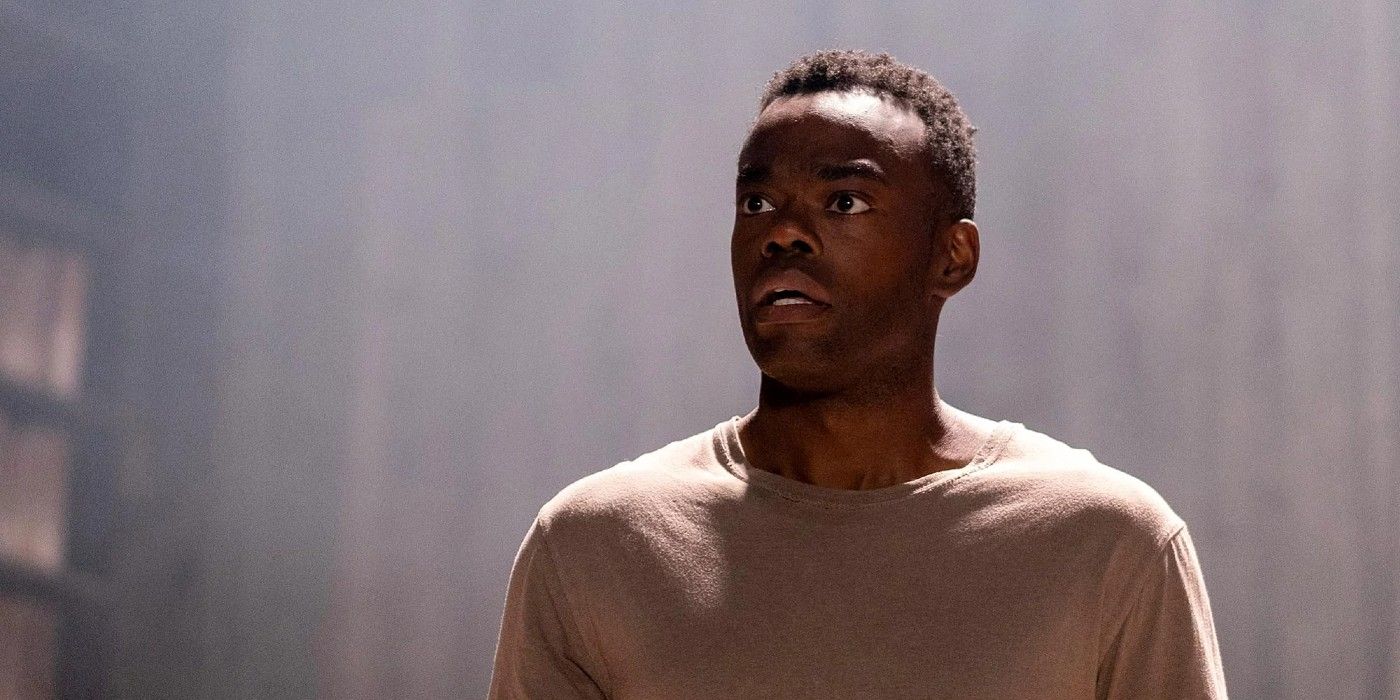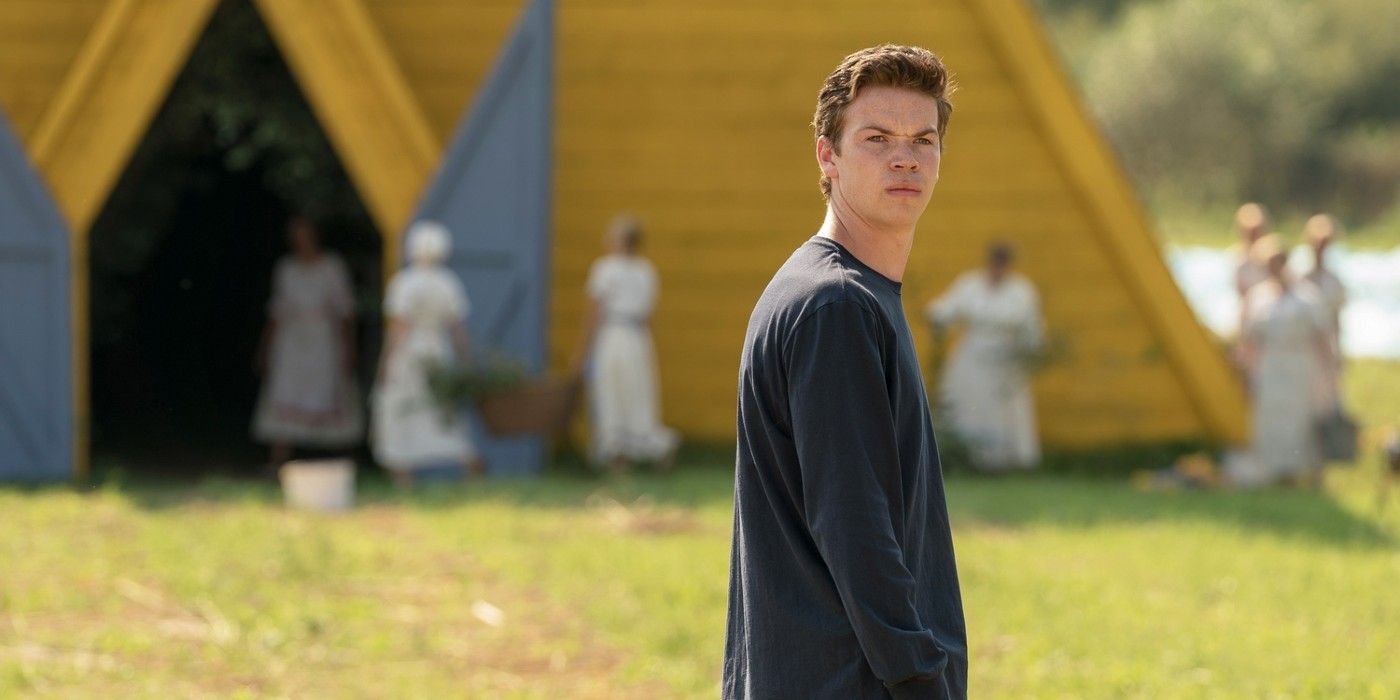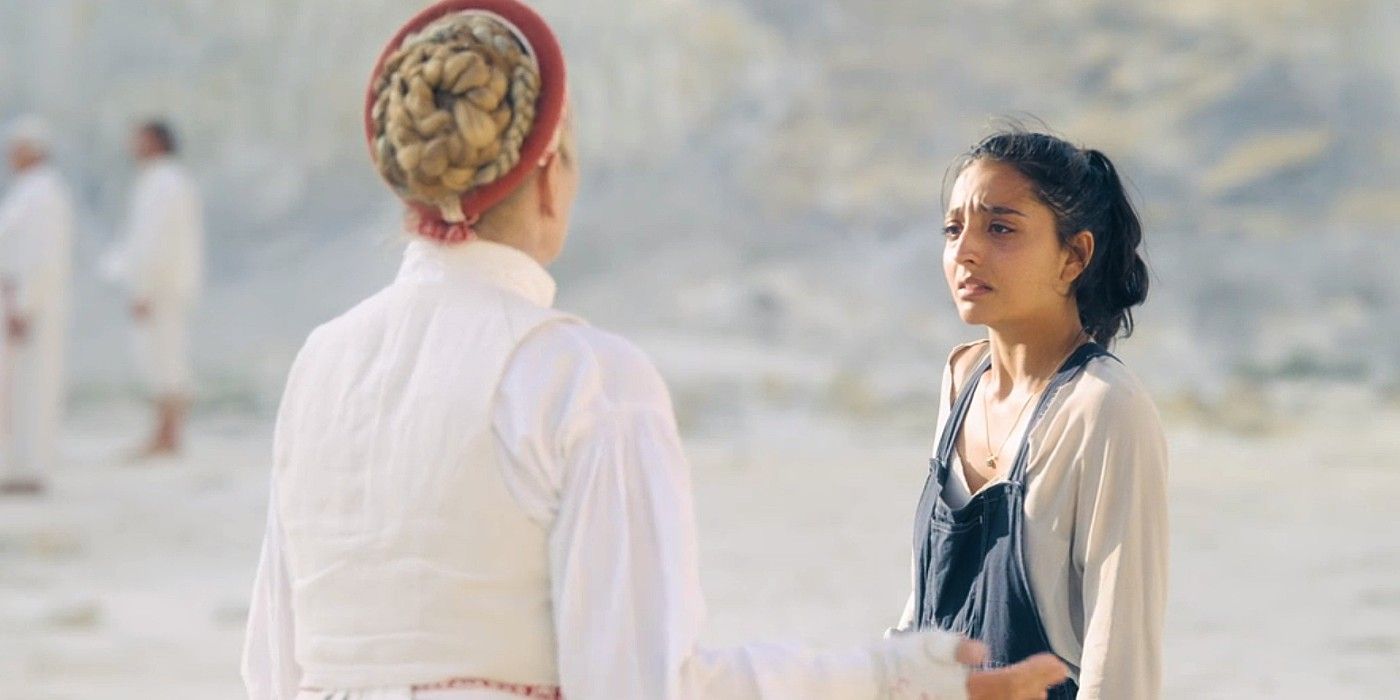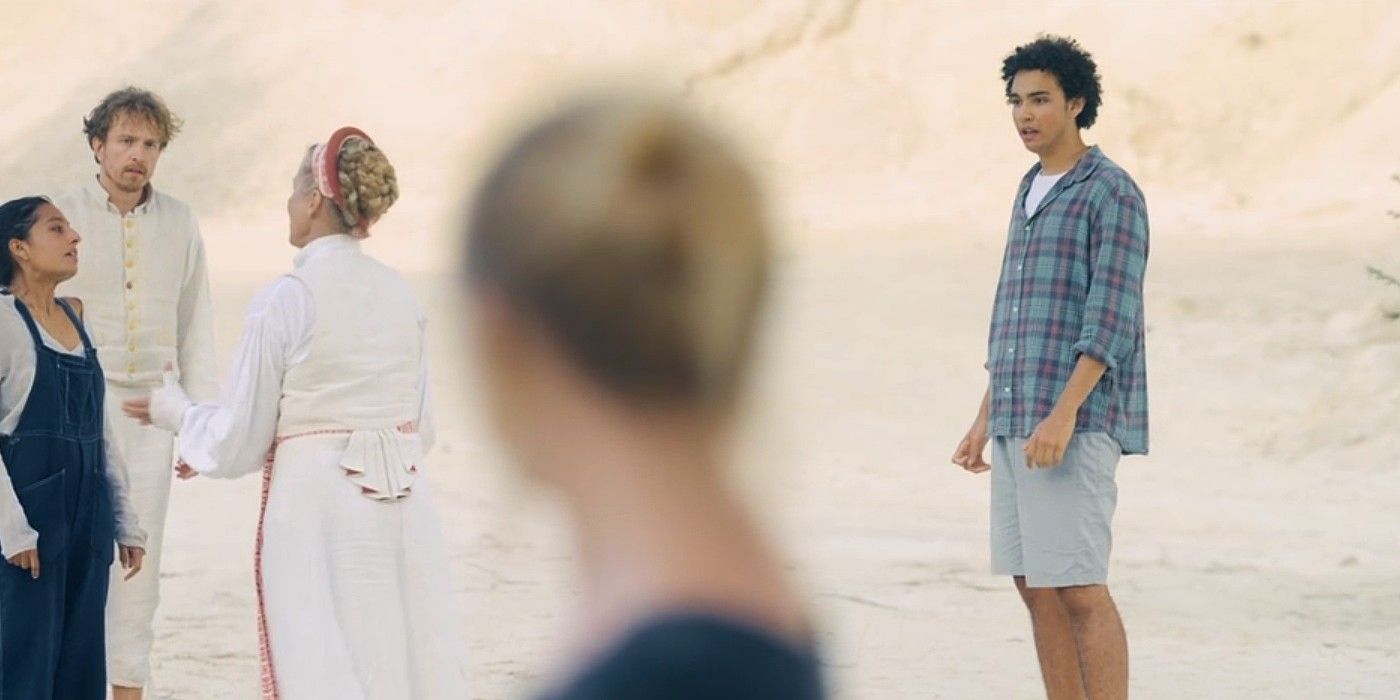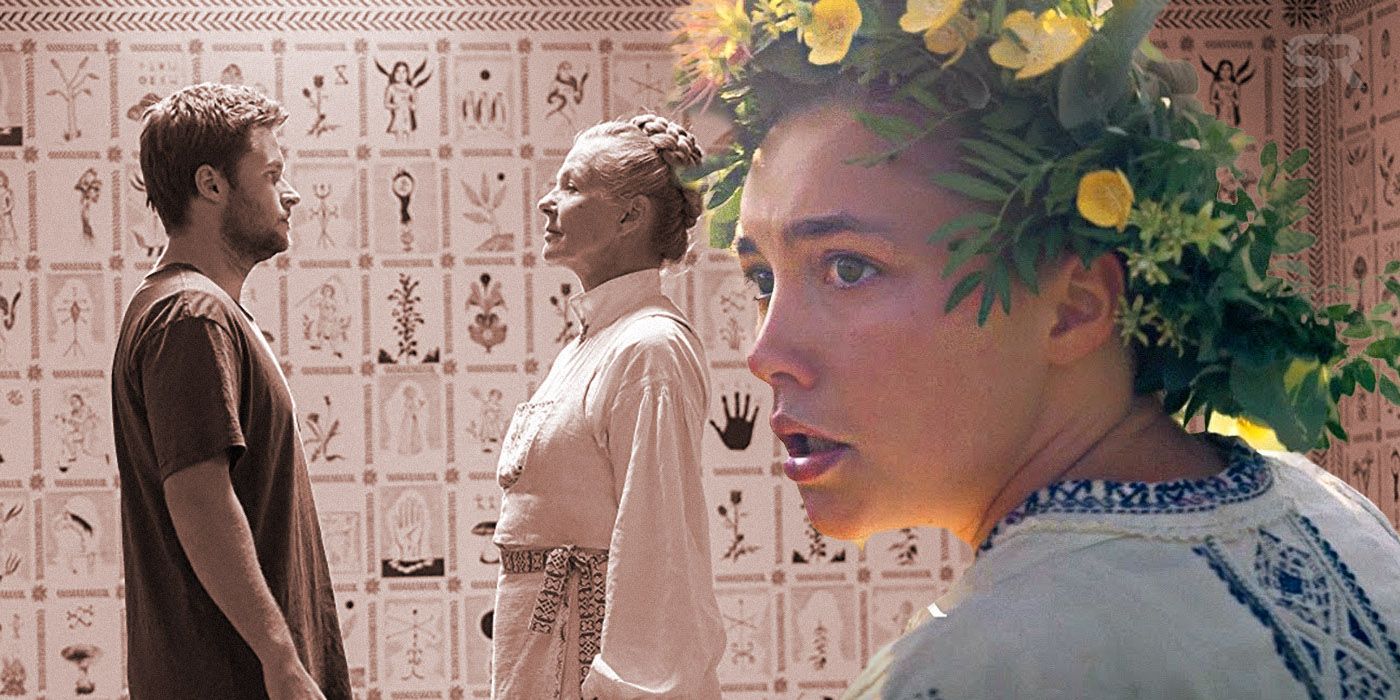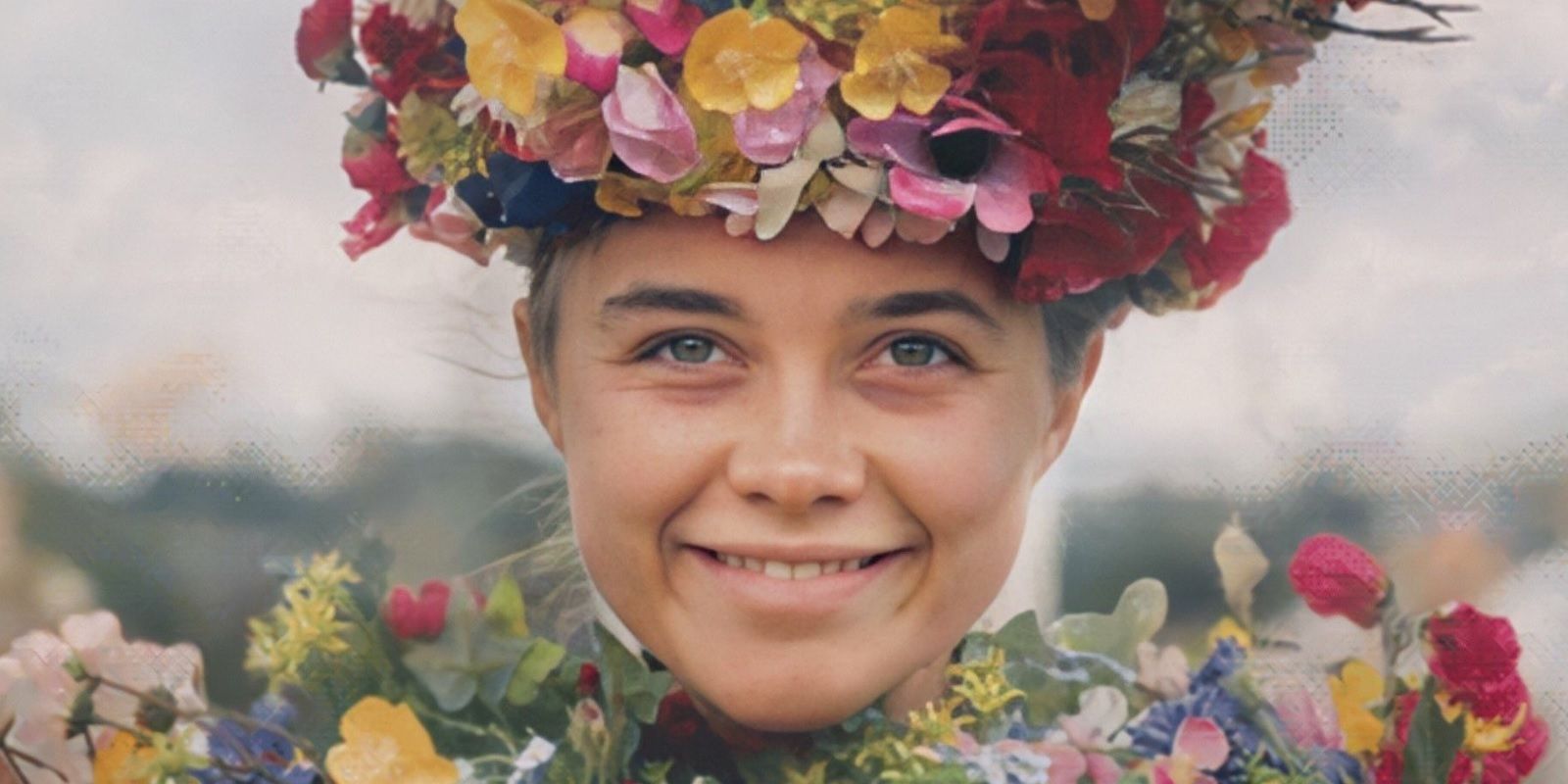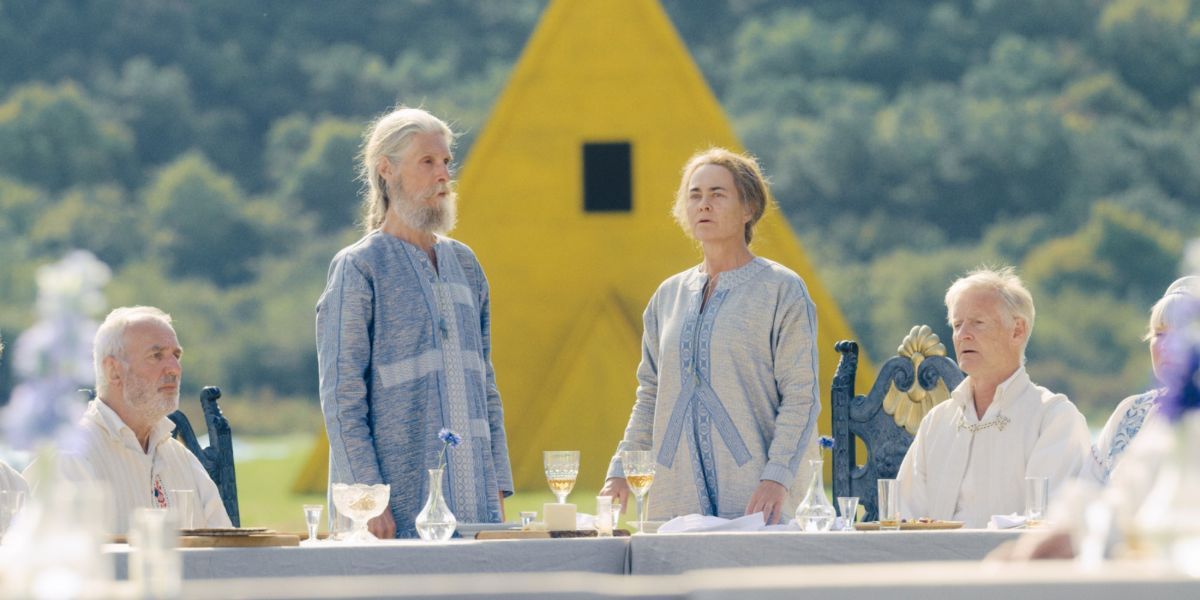Summary
- The deaths in Midsommar represent the four elements (earth, fire, water, and air) and serve as symbolic sacrifices for the Hårga cult's connection to nature and their desire for a plentiful harvest.
- The specific ways in which each character dies reflect their journey and personality, with Josh representing earth, Mark representing fire, Connie representing water, and Simon representing air.
- The movie's rich symbolism and open-ended narrative have led to various fan theories, deepening the overall meaning and impact of Midsommar. Florence Pugh, the film's lead actress, appreciates the theories and the creativity they inspire.
Ari Aster's folk horror movie Midsommar is filled with obscure symbolism, to the extent that the Midsommar deaths suggested a hidden connection to the four elements that might expand the whole movie. One theory about the deaths in Midsommar suggests that each side-character's death represents one of the four elements: earth, fire, water, and air. Through these four Midsommar deaths, four seasons are invoked in the rituals of the Hårga cult. This has led to some deep theories about the significance of how each Midsommar character dies.
Midsommar was a breakout hit, and it's because the cerebral A24 horror movie unravels a slow-burn sense of dread that eventually turns deadly. However, unlike typical slasher movies that simply add to the body count, the casualties in Midsommar seem quite purposeful. Their deaths are meant to symbolize an even deeper connection to the Earth for the Hårga cult, whose religious and cultural practices are somewhat steeped in the tenets of paganism. As such, there's a widely circulated theory that the Midsommar deaths each represent one of the four elements.
The Hårga's Ambiguous Rituals Are Key To The Midsommar Deaths Theory
How The Hårga Cult's Beliefs Connect To The Four Elements
Midsommar explained Hårga's rituals loosely, and this ambiguity proved fertile ground for a wealth of Midsommar fan theories. Midsommar follows Dani (Florence Pugh), Christian (Jack Reynor), Josh (William Jackson Harper), and Mark (Will Poulter) who travel with their colleague Pelle (Vilhelm Blomgren) to join in the cultural festivities at his ancestral commune. While the sun shines bright as the days amble on, darkness looms over the characters, and they begin to vanish under bizarre circumstances.
To understand why the elemental theory works, it's critical to acknowledge the fact that the Hårga cultists share a strong relationship with the Earth and nature as a whole. Their entire mid-summer tradition serves the purpose of ensuring a plentiful harvest, healthy livestock, and a growing community with new births. The Hårga's insistence on giving back what they take from the natural world lends much to the theory that Josh, Mark, Connie, and Simon's deaths are symbolic of the four elements.
The four distinct Midsommar deaths — representing the four seasons or four elements of nature — also reflect the journey of each character, and could explain why they were killed in such distinct ways and given important places in the final ritual. For instance, Josh reached too far and had to be grounded back to the earth. Meanwhile, Mark's indiscriminate destructive actions are akin to a wildfire. As for Simon and Connie, who insisted on leaving, they were each granted passage, through the elements of air and water respectively.
Josh's Death Represents Earth
The Hårga's Leaving Josh In Dirty Symbolizes The Earth Element
After the Hårga cult's sacred text — Rubi Radr — goes missing, the disappearance is blamed entirely on Josh. Prior to the accusation, he was in the current Oracle's home taking photos of the text to include in his Ph.D. thesis examining Midsommar's version of the Swedish festival. While taking pictures, he is hit over the head by a member of the Hårga cult while a man wearing Mark's face stares at him. Josh's fate is left unknown until the final fifteen minutes of the movie, when Christian runs from the building where he had sex with Maja (Isabelle Grill).
As Christian runs towards a small barn, he sees Josh's foot sticking out of a garden plot with a Swedish rune engraved into the bottom of his foot. This specific rune is known as the Ansuz rune, which represents the transmission of intelligence and knowledge. While Josh was killed for his drive toward achieving his goal to attain as much information on the Hårga cult's customs and traditions as possible, the way they disposed of his body represents Earth according to the theory.
Josh's body is buried under fresh dirt, and his foot sticks out of it like a plant. Midsommar suggests this is symbolic of what the Hårga's hope to achieve with their mid-summer festivities: give back to the Earth and be rewarded with plentiful crops as a result. Josh's leg represents the sacrifice of his body for a plentiful harvest, along with the fact that no outsider is deemed worthy of forbidden knowledge within the confines of the cult.
Mark's Death Represents Fire
Mark Being Turned Into Fuel For The Pyre Represents The Fire Element
The Hårga's kill Mark after he accidentally urinates on their sacred ancestral tree, an act that is interpreted as a massive transgression and insult from the cult's perspective. As Mark's death is not immediately established as he is missing halfway through the film after being beckoned by a Hårga girl, it is revealed much later during Josh's final scene with the Rubi Radr.
Mark's death was somewhat foreshadowed in the initial scenes of Midsommar, as the children playing "skin the fool" is a direct reference to Mark's skin being flayed after he urinates on a sacred artifact. When the final sacrificial scene towards the end is underway, his body is stuffed with hay and placed in a wheelbarrow.
The distinct way in which his body is prepared indicates that Mark represents the element of Fire because hay burns much quicker than flesh, and Mark is turned into fuel. Some versions of the theory also suggest that Christian's grizzly demise was representative of this element, as the final shot in the triangular building shows him engulfed in flames. However, the way Mark recklessly violates sacred ground, not caring about any consequences, is more comparable to the path of a wildfire.
Connie's Death Represents Water
Connie Was Drowned As A Tribute To The Element Of Water
The truth about what happened to Connie in Midsommar after she attempted to flee the mid-summer festival with Simon has been a major point of discussion. While audiences see the physical bodies of every other character before the final scene, she does not reappear until the very end — in a wheelbarrow. Though her moment of death isn't shown on screen, it lends itself to the Midsommar four elements death theory.
As she's wheeled into the building, her body is blue, wet, and covered in seaweed. It is obvious that Connie was drowned by the Hårga members and left in the water until they needed to use her for the appropriate ritual. Therefore, Connie's death is an obvious representation of Water and a possible reference to the fact that her refusal to accept the ways of the commune was literally purged out of her body through death by drowning.
Simon's Death Represents Air
The Blood Eagle Execution Simon Is Still Breathing Through Represent The Air Element
Out of every Midsommar death, Simon's (Archie Madekwe) is one of the most unsettling, and represents the element of Air according to the theory. After Christian sees Josh's foot in the garden, he seeks refuge in a small barn where he discovers Simon's body hanging from the ceiling. The skin on his back is peeled from his muscles and positioned to have the appearance of bird wings, which in line with the blood eagle method of execution and torture. This kind of torture method has been referenced in great detail in Norse poetry, and it is interesting to note that his eyes are also removed and replaced with flowers.
Perhaps the most disturbing part of Simon's death is the fact that he is actually alive when Christian finds him. It's very subtle, but his chest can be seen rising and falling with each painful breath he takes, serving to paint a much more complete picture of the cruelty of Midsommar's Hårga cult. With the combination of his body hanging from the ceiling, the wings made from the skin on his back, as well as his continued breathing, mean Simon represents Air.
The Midsommar Four Elements Theory Shows How Deep It Is
Midsommars Heavy Symbolize Have Led To Many Theories About The Meaning
Midsommar has spawned a lot of fan theories because it's so rich in symbolism. The Ari Aster horror film is still being discussed years after release thanks to its stunning visuals, exceptional plot, and the fact that the entire movie happens in pure daylight (rare for a horror movie). Part of what makes Midsommar so endearing is it leaves a lot open to viewer interpretation, and there are many elements interwoven in its symbology that are easy to miss on the first viewing. Midsommar is deep because it's just ambiguous enough to leave questions without being so ambiguous that it's confusing.
The movie has spawned other theories besides the death and four elements connection. One is that after the events of Midsommar, Pelle becomes the new village Oracle. His crowning at the end of Midsommar and the elder's speech both point to this, as he is "recognized for his unclouded intuition", something that was stated earlier as a requirement for an Oracle. He's also shown sitting in a tree drawing in the opening's tapestry — a moment foreshadowing much of the following narrative.
There's also the theory that Hereditary and Midsommar exist in the same universe, that Maja and Christian actually created the new Oracle, and that Dani was predestined to be Hårga's May Queen. Right or wrong, these theories prove just how deep Midsommar is, as there are plenty of plot threads left open to interpretation.
What Florence Pugh Thinks Of The Midsommar Theories
The Star Of Midsommar Finds The Fan Theories Interesting
Midsommar made for a breakout movie for Florence Pugh who delivers a complex and compelling performance as Dani. Pugh has also acknowledged that she is aware of a lot of the fan theories surrounding the movie, including one that suggests Dani was in on the plan the entire time and she hoped to lead Christian to his death.
Though she didn't speak to the theory surrounding the four elements and the deaths in Midsommar, Pugh did express (via Den of Geek) that she loves to hear the theories, saying "That’s exciting in itself, the fact that people are wanting to think about it and they’re wanting to change it, and they’re wanting to have their own theories. To make a film that inspires creativity like that is really cool."
Midsommar Is Based On A Real Swedish Festival
The Real Midsommar Festival Doesn't Involve Human Sacrifice
Midsommar's gorgeous and grotesque take on cult horror is inspired by the real-life Swedish Midsummer Festival, a tradition established by the Swedish Parliament in 1952 to celebrate the beginning of summer. While the Hårga cult performs its ceremonies once every 90 years, the Midsummer Festival is an annual tradition, typically scheduled in late June in line with the Summer Solstice. Just like its fictional counterpart in Midsommar, the Midsummer Festival is filled with symbols of nature, feasting, and ritual dance.
While the Hårga cult performs its ceremonies once every 90 years, the Midsummer Festival is an annual tradition, typically scheduled in late June in line with the Summer Solstice.
Director Ari Aster chose the real village of Hårga because of the Swedish legend of Hårgalåten, in which the devil disguises himself as a fiddler and tricks the people in Hårga into dancing themselves to death — evocative of Midsommar's harrowing rituals. Although the events in Midsommar are very loosely based on Sweden's real Midsummer Festival and are more of a hodgepodge of spiritual practices from all over the world, there's something to be said about the effectiveness of horror when it's tied to reality. This is especially true when that reality is a fun festival that draws tourists to Sweden every Summer Solstice.
The Midsommar Deaths Also Represent Ari Aster's Phobias
Midsommar's Violence Is Based On The Director's Own Trauma
While the ritualistic Midsommar deaths may have a basis in the four elements, one of the movie's most famous death scenes comes from director Ari Aster's own fears. Shortly after arriving at the festival, Dani and the others experience the ritual of the community's older citizens leaping to their death from a cliff. However, when one of the sacrificial jumpers survives the fall, the community ends his pain by crushing the injured man's head with a giant mallet.
The moment is among Midsommar's most gruesome, and Aster admits that he took the idea from horror movies that traumatized him as a child — especially those with images of head trauma — that left a lasting impact on him. Aster shared in an interview with Letterboxd:
"I grew up loving horror films and subjected myself to a lot of grotesque imagery. I’ve always had a feeling for the macabre. There are a lot of images that traumatized me and I’m sure that they lingered in my mind in a way that conditioned me to pursue images like that and come up with them myself. In all of my stories, the imagery comes after the ideas and characters, so it tends to fall in line with the story. In some cases it does come first, but it’s very hard to trace any of that to any origin."
For the Midsommar mallet death scene, Aster used childhood fears and disturbing memories to conjure uncomfortable emotions, utilizing his own trauma to great effect. Aster's fears translate well to the screen, as they helped to create one of the most memorable moments in Midsommar. Others have pointed out that Aster used the same fear of head trauma to great effect in Hereditary's memorable death scene. If Aster is willing to mine his darkest dreads for horror material, he will continue to cement himself as one of the genre's best new voices.
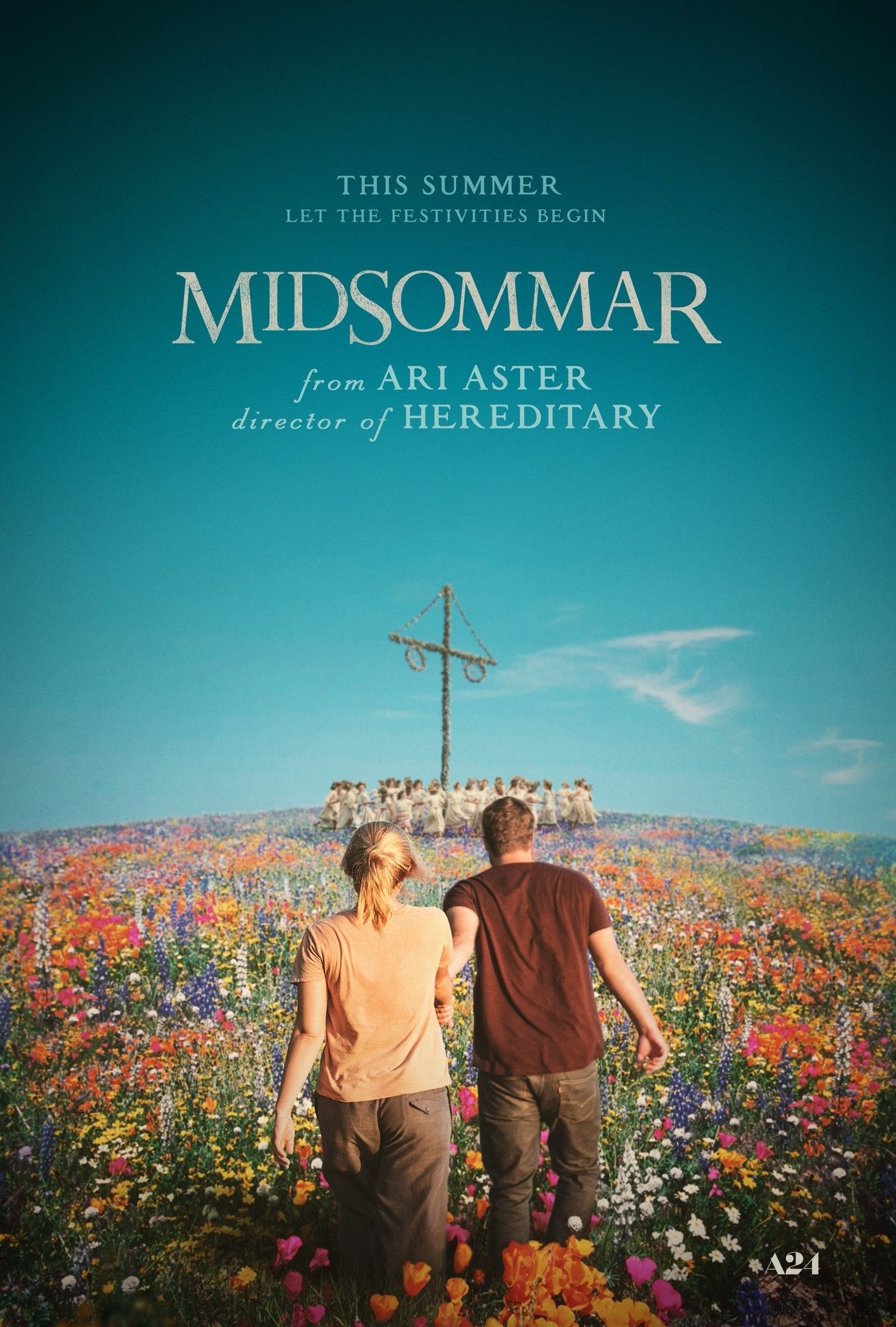
Midsommar
- Release Date
- July 3, 2019
- Director
- Ari Aster
- Cast
- Julia Ragnarsson , Rebecka Johnston , Henrik Norlén , William Jackson Harper , Gunnel Fred , Anna Åström , will poulter , Archie Madekwe , Louise Peterhoff , Björn Andrésen , Isabelle Grill , Jack Reynor , Florence Pugh , Liv Mjönes
- Runtime
- 147 minutes


